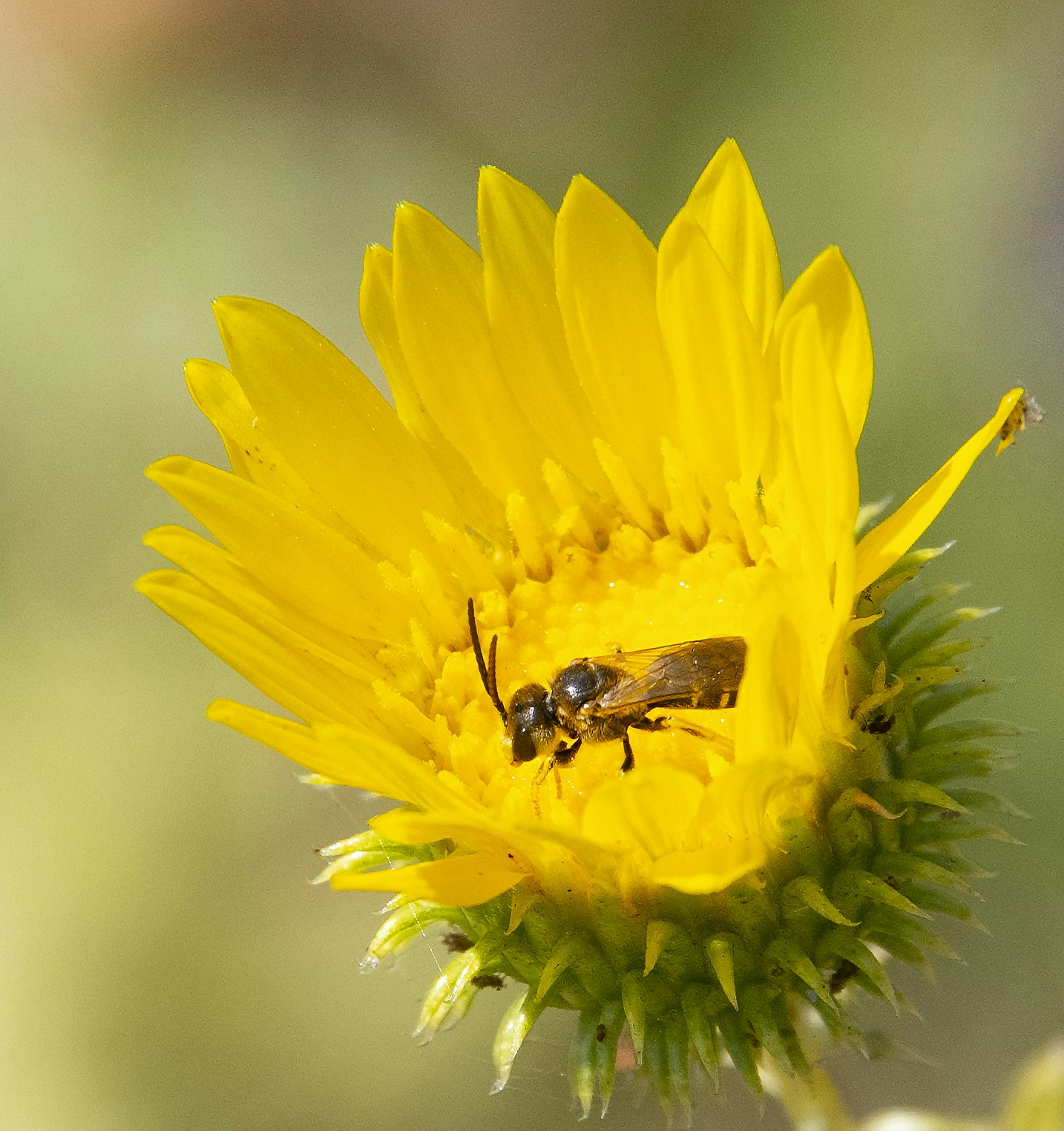Critter of the Quarter - Ligated Furrow Bee

The Ligated Furrow Bee (Halictus ligatus) is a small to medium-sized bee with a slender narrow waist, long antennae and is predominantly brown-black in color. Classified as “generalists,” furrow bees are known to feed on different kinds of flowers. They are also known as “sweat bees” due to their attraction to the salts in human perspiration. While they may be attracted to human sweat, they tend not to be aggressive unless their nest is encroached upon.
Furrow bees build nests by mining or burrowing into the ground. Nests are established by a single female who mated and laid eggs the previous spring. After foraging through the summer and fall, furrow bees retreat to their nests to wait through the winter. They re-emerge in June and the cycle starts over with some workers leaving and starting their own nests.
Furrow bees are active pollinators and one of the few groups of bees known to use buzz pollination to extract pollen from flowers. Buzz pollination is a behavior in which the bee grabs onto a flower with its mandibles and rapidly contracts its flight muscles to produce a buzzing sound. This vibration causes the flower to release its pollen, which the bee can then collect.
The Ligated Furrow Bee is a welcome resident to Moorhen and McNabney marshes.








